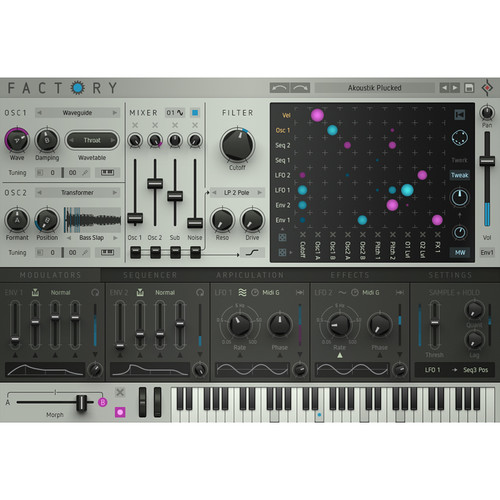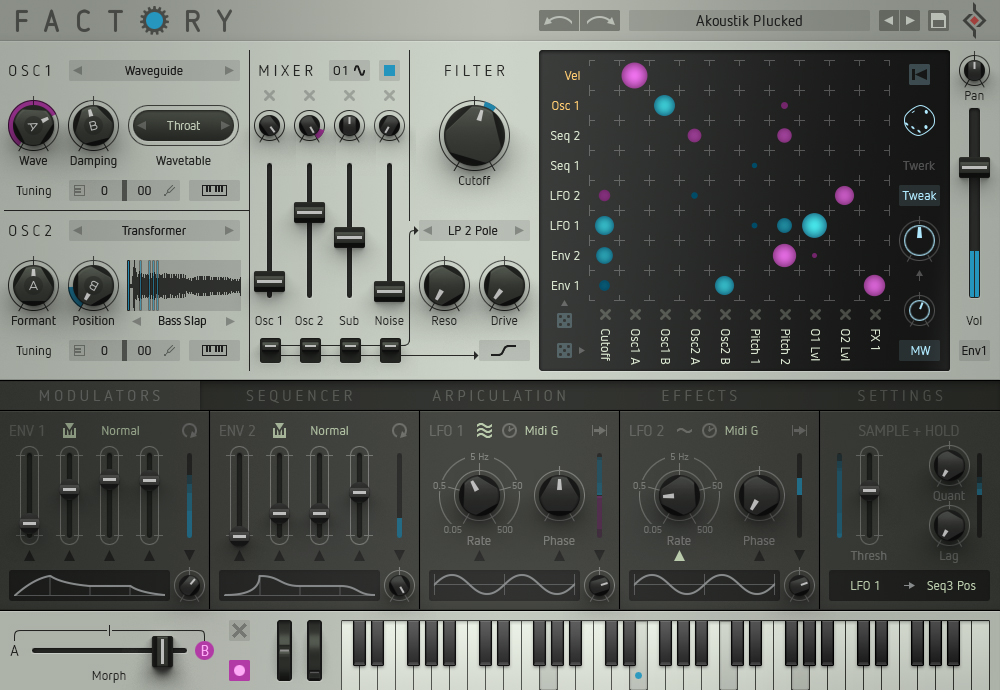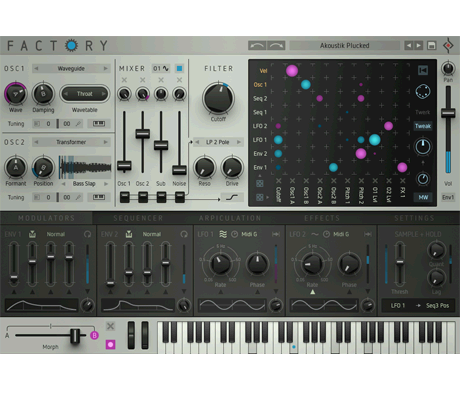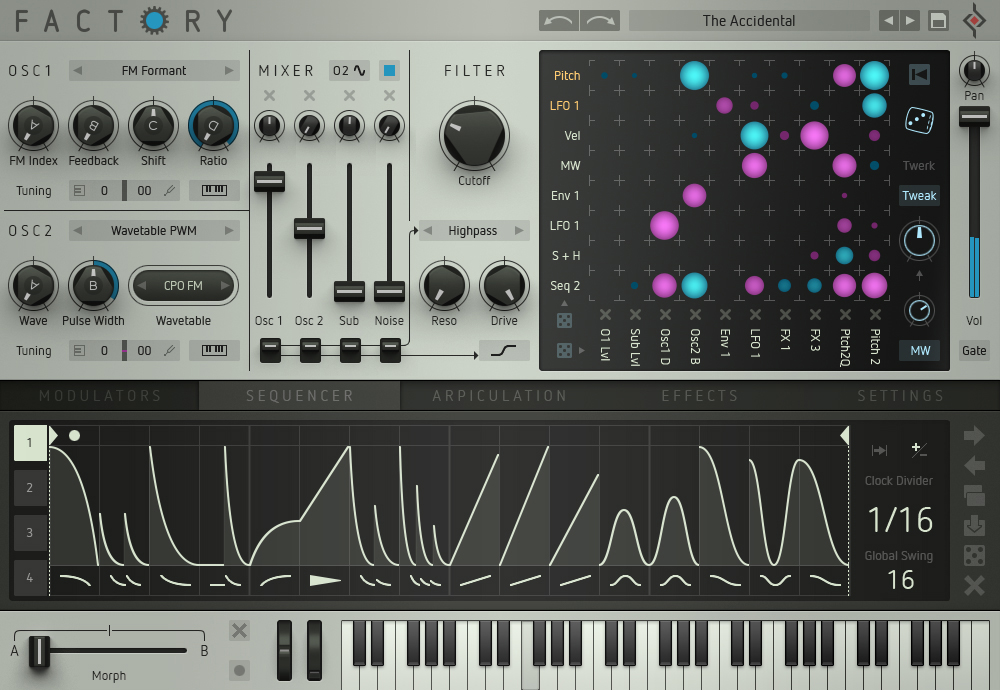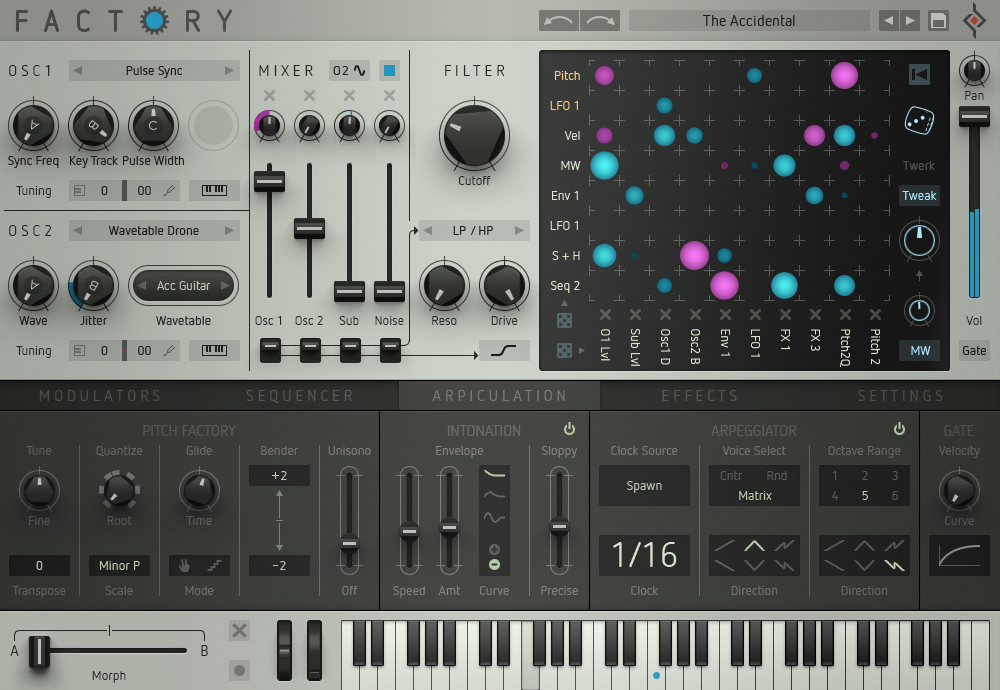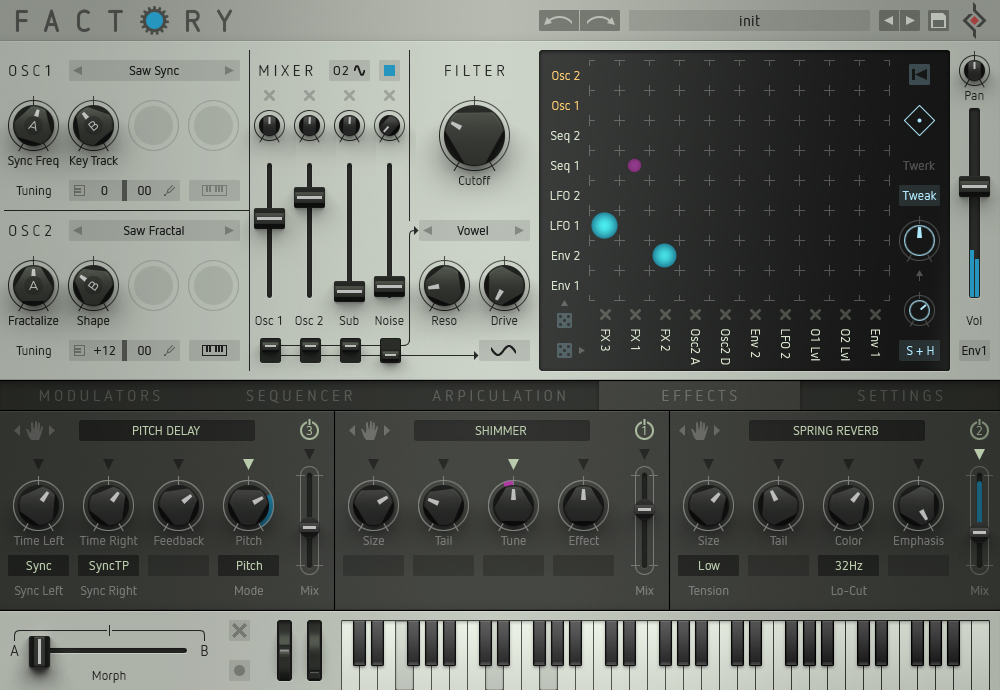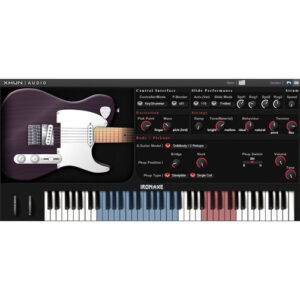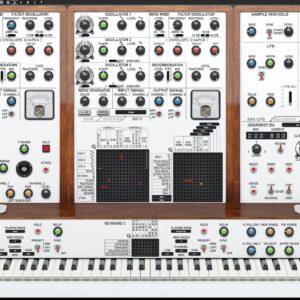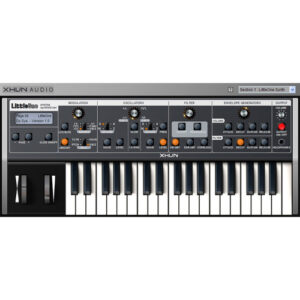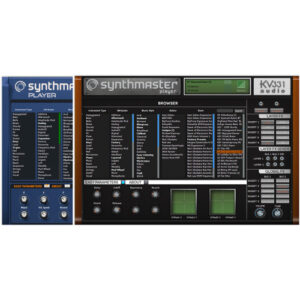MMS: 3541 •
MPN: 11-33192 •
SKU: 1035-723
Sugar Bytes Factory Liquid Modular Synthesizer – Virtual Instrument (Download)
Authorized Dealer
In Stock
$129.00
100 in stock
Features
• Modular Synthesizer in Software Form
• 2 x 10 Oscillator Engines
• Sub Osc (with RingMod) & 5-Color Noise
• Multiple Types of Synthesis Available
Description
Available for download, Factory from Sugar Bytes is a complex modular synthesizer in virtual instrument form. It features two oscillator engines with 10 types of synthesis apiece, including VA-sync, FM, transformer, fractal, six types of wavetable, and more.
For manipulating these oscillators, there is a vast array of envelopes, filters, LFOs, sequencers, arpeggiators, tonal quantizers, and randomizing elements, all of them assignable via the intricate—yet fairly intuitive—matrix window. Furthermore, an on-board effects section allows you to apply tasteful reverbs and delays to your resulting timbres. This virtual instrument is compatible with Mac and Windows platforms, and operates in VST, AU, and AAX formats.
Oscillators
This soft-synth utilizes VA-Sync and fractal oscillators, as well as wavetable, waveguide and FM synthesis. A dropdown menu changes how the oscillators function, giving you different knobs depending on the type of oscillator you select.Furthermore, all of these knobs can be assigned to filters, sequencers, and more via the matrix window. You get two mixable oscillators, plus an assignable sub oscillator and five kinds of noise, also mixable.
Modulators
Factory gives you two ADSR envelopes which can be assigned to many parameters via the matrix window. A graphic indicator shows you how the ADSR you’ve dialed in will behave. Loop mode is available for these envelopes, as is a fine-tuning knob for subtly manipulating the ADSR curves. You can add additional manipulation to these envelopes by means of a dropdown menu just above the Sustain slider.Additionally, two LFOs which can operate freely or in time with your DAW’s BPM. A phase knob allows you to nudge the time of the LFO more precisely, and a polyphony mode allows you to disperse the modulation effect individually across all the notes in any given chord, fine-tuning/tailoring the LFO across an entire harmonic structure.Lastly, don’t discount the sample/hold function, which allows you to sample a triggered input source and freeze it at different values as determined by the threshold slide. Yes, it sounds very complicated, and likewise, you can create all sorts of complicated, intricate soundscapes and effects with this parameter.
Arpiculation Panel
The Arpiculation panel is a combination pitch-manipulator and arpeggiator, divided into three sections: Pitch Factory, Intonation, and Arpeggiator.The Pitch Factory section gives you control of every note’s tuning, as well as options to change the scale and tonal center of all the notes on the keyboard. You can also manipulate various glide modes, change the range of the pitch wheel, and apply the “Unisono” slider. The Intonation area adds a pitch envelope to the start of any note you trigger. The shape of this envelope can be influenced in a variety of ways within this section. Finally, an arpeggiator rounds out this panel, with controls over speed, direction of arpeggiation, randomness, and more.
Matrix Routing
Factory’s matrix allows you to route eight sources to ten targets. For instance, you can route any LFO to the cutoff filter. Once you’ve routed a parameter to a target in the matrix window, you can choose whether the effect acts in a positive or negative manner, doing so by dragging your mouse (upwards for positive values, downwards for negative). Using the mouse in this manner also influences the intensity of the signal being fed to the target.In the matrix section, sources one and two can receive audio input straight from the oscillators or the master output, resulting in some truly strange and esoteric manipulation possibilities. Further options abound the matrix window, including a dice icon—which gradually introduces randomness into the matrix depending on how much you “roll” it—and a tweak/mutate/target knob for changing the relationship between intensities. For added fun, you can affect this knob’s behavior via LFOs, envelopes, the mod-wheel, and more.
Four Sequencers
Factory features four sequencers which can trigger the envelopes, the LFOs, the Arpiculation, and the sample/hold circuit. Each sequencer has 16 steps, whose start and end points can be changed. A one-shot button forces the sequence to finish when it plays through to the end point.Each sequencer can act as a source in the Matrix window, and macro buttons allow you to shift all values to the right or left, copy sequences into other sequencers, paste them, create randomized sequences, and delete whatever mayhem you have engendered, so that you may start from scratch.Each step in the matrix window boasts its own selectable shape, which will change how the sequencer reacts. There are 36 selectable shapes in total per step, but you can also draw in custom envelopes if none of the shapes pique your fancy.
Morph Slider
The Morph slider allows you to transmogrify one sound into another by recording and storing “A” and “B” states (as dictated by the matrix), and then sliding between the two. Thus, you set up a sound you like, flip the slider to the A position, and hit record; then mess around with the settings, flip the slider to the B position, and hit the record button again. Now, when you slide between A and B, all of the parameters will gradually shift from the A setting to the B setting. This can be used for simple effection, or for unbelievable complex manipulation. Furthermore, the morph slider can be assigned to mod-wheel, making this a useful feature for live performance.
Effects Section
A dedicated panel gives you access to the effects section, which includes reverb, stereo filter, chorus, compressor/maximizer, delay, and more.

